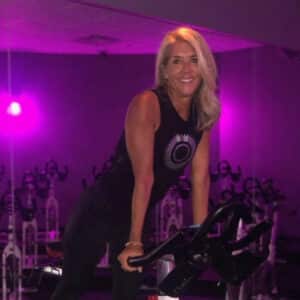Society puts a lot of importance on numbers when it comes to women, defining us by age, dress size, weight, height, and even bra size. With so much pressure to fit society’s standards and social media’s unrealistic expectations, it’s no wonder that some women step on their bathroom scales daily, obsessing over even the slightest fluctuation. What these women need to realize, however, is that the number on the scale isn’t always an accurate reflection of overall health and fitness.
As a cycle and Pilates instructor, I see plenty of women who think they are fit because they are “skinny” and plenty of healthy women who consider themselves “fat” because they are not a size two. Neither one is necessarily true. Before stepping on a scale, you must remember that other factors, including muscle mass and water retention, can affect your overall weight. A fit, healthy body looks different on everyone. It’s important to look at the big picture to know what it looks like on you. Here are four ways to weigh your fitness level without stepping onto a scale.
1. How’s Your Heart Rate?

With today’s smartwatches and fitness trackers, monitoring your heart rate has never been easier. While nothing is foolproof, most devices today can provide a relatively accurate picture of your cardiovascular function, which strongly projects overall fitness. One of the first things to consider is resting heart rate (RHR). The lower the resting heart rate, the greater the cardiovascular health. According to the Mayo Clinic, 60-100 beats per minute (BPM) is the range for the average adult at rest, while elite athletes may be closer to 40 bpm. “The more you exercise and the harder you train, the lower your resting heart rate,” cardiologist George Welch, M.D. told SELF, adding that the best time of day to check your RHR is first thing in the morning before the day’s stress or your morning latte kick in.
Another thing to consider is your heart recovery rate (HRR), or how quickly your heart rate returns to normal after a workout. A study published in 1999 found that HRR within the first 60 seconds post-exercise was a significant indicator of early death. Professor of exercise physiology in the College of Health Solutions at Arizona State University Glenn Gaesser, Ph.D., says while there’s no “hard and fast rule,” generally, your HRR should be at least 70% of the way back to its pre-exercise rate within just a few minutes. “If you’re exercising at a vigorous intensity, it should drop at least 20 beats in the first minute and another 15 to 20 in the next minute or so,” he told Health Central.
2. Measure Your Metrics

When it comes to measuring fitness, try measuring your metrics instead of your midsection. What do we mean? Set attainable fitness goals for yourself and monitor your progress over time. Start with a measurable baseline, such as how long you can hold a plank, how many pushups you can do in one minute, or how much weight you can lift in a bicep curl or chest press. See how many jumping jacks or burpees you can perform within a set time. Check in with yourself every month and see if those numbers improve. If so, you are successfully building strength and endurance. You may not see that on a scale because you are replacing fat with lean muscle mass, which weighs more.
3. Focus on feeling

A popular mantra in many gyms and group fitness classes says, “It’s not getting easier; you’re getting stronger.” That’s where your rate of perceived exertion (RPE) comes into play. Typically measured on a scale of 1-10, your RPE is how difficult an exercise feels in the moment. In other words, how hard are you working? If you used to be breathless after 10 minutes on a treadmill but can now run comfortably for 15-20 minutes before reaching that breathless state, that’s a good indicator of improved endurance and overall fitness.
4. How do you function?

Can you bend over and tie your shoes without throwing out your back? Can you get up from the floor with ease? Can you walk up a flight of stairs without becoming winded? These basic daily movements are related to your overall fitness level but are not necessarily tied to your weight. Even a seemingly “fit” person may struggle with physical limitations due to poor flexibility, lack of muscle tone, or cardiovascular issues that impede quality of life. No scale is going to accurately gauge your functional fitness.
Before you throw your bathroom scale out altogether, remember it can be a helpful tool when used correctly. Weighing yourself once a week or even once a month to monitor your progress toward a weight loss goal can help keep you on track. However, if you step on it once a day or more and obsess over the results, it might be time to focus on these other fitness factors. At the end of the day, fitness should be less about how you look or the number on a scale or label and more about how you feel and function daily.
Read Next:
4 Weighted Ab Workouts We Love









